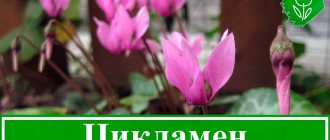This plant with the interesting name Murraya paniculata has not yet become widespread among lovers of indoor plant growing in our country, but in vain. It belongs to the extensive rutaceae family, which also includes the popular citrus fruits. And it has no less healing properties. But growing Murraya is much easier, and it reproduces very simply, without any vaccinations or other difficulties. Today we will tell you how to care for Murraya paniculata (paniculata) at home.
Description of the Murraya plant
Murraya is an exotic flower grown indoors. It seems something incredible, because if you provide Murraya with care, it is able to bloom amazingly, bear fruit abundantly and delight with its beautiful appearance throughout the entire 12 months. At the same time, a Murraya bush can be decorated with fragrant flowers and bright fruits. And the dense shiny foliage does not leave indifferent even people who are not keen on growing indoor flowers.
At the same time, on the muraya bush you can contemplate buds, flowers, and ripened fruits.
According to one of the eastern legends, during the times of Ancient China, an exotic beauty was cultivated exclusively at the court of the emperor - the plant was considered a magical shrub that brings good luck, financial well-being, longevity, and good health to the owner. Ordinary people were forbidden to grow Murraya at home - violation of the law was severely punished.
This is interesting! During the times of Ancient China, only the emperor could inhale the subtle aroma of murraya. It was believed that the fragrance of flowers allows one to maintain clarity of mind, beauty and contributes to the birth of healthy people.
Magnificent bright glossy leaves attract the eyes of even the most indifferent spectators.
Everything connected with this plant is shrouded in mysticism and various myths. Separate parts of murraya were part of the mystical “elixir of life” for the Egyptian pharaohs. They were confident that a few drops of this remedy could bring the mummy back to life. Drops of the elixir were valued higher than precious metals, and only the initiated knew the recipe.
Professionals give the following botanical description of the flower:
- Belongs to the species Rutaceae.
- In indoor conditions, the bush grows up to 70 cm in height and 50 cm in width. The trunk of the plant is flexible, the bark is gray-yellow.
- Newly formed shoots are drooping. In adulthood they are smooth.
- The leaves are shiny, rich green.
- The flowering period begins at a very young age. Small fragrant buds can be collected in racemose inflorescences, or can be solitary.
- The fragrance is reminiscent of jasmine.
- Reproduces by self-pollination. After this, small green fruits form on the bush, which gradually turn red.
- The ripening period is four months. And due to the fact that the ovaries on the bush are formed without interruption, berries, buds and blossoming flowers can be located on it at the same time. This increases the decorative properties of the plant.
- Murraya is capable of blooming throughout the year. But in winter, in low light conditions, flowering may stop.
- The closest relative of the exotic beauty is the citrus family. Therefore, it has an extraordinary external resemblance to representatives of this species.
The citrus family is the closest relatives of our beauty.
Due to its amazing fragrance and family ties to citrus fruits, Murraya is often called “orange jasmine”.
Mr. Summer resident: interesting facts about Murray
Muraya in the house is a natural flavoring agent and a source of natural spices. It is used as a culinary ingredient in India, usually as a spicy addition to meat. The leaves are pre-fried and preserved in oil; this seasoning is well suited to all meat and vegetable dishes.
The anti-cold properties of muraya have been known since the time of Alexander the Great. An infusion of the leaves allows you to quickly get rid of signs of the disease; you also need to chew fresh leaves for these purposes. Chewing helps get rid of ulcers and stomatitis in the mouth.
In Egypt, the cultivation of the plant was practiced to prepare a special drink, the mention of which is preserved in manuscripts. Leaves, flowers and berries were used for this. Egyptian doctors called it nothing more than a vital elixir. The cooking features have not reached our time.
This plant is recommended for people suffering from cardiovascular and pulmonary diseases. The aroma of flowers normalizes respiratory processes and promotes good sleep.
The medicinal properties of Murraya, its benefits and harms, are now being studied by many research centers. This foreign miracle flower can be grown for medicinal purposes, but you need to pay attention to contraindications for allergy sufferers.
Murraya species
More than a dozen species of Murraya grow in nature. However, only a few of them are grown indoors.
Murraya exotic Myrraya Exitica
This exotic beauty is valued for its glossy leaves of rich emerald color. If they are touched, the flower will begin to exude a tart aroma, similar to the fragrance of rue. The plant is common in some Asian countries: India, Sumatra, China. Outwardly, it is very similar to lemon, so they are often confused.
A botanist from Germany in the 18th century, Murray, first described the plant; it was to him that it owes its name, although it would be more correct to call it Murray.
The growth period of an exotic species is long. Murraya Exotica first accumulates nutrients, after which it begins to grow rapidly.
Inflorescences develop within three weeks. They are self-pollinating and look like lemon buds. Despite the small volumes of the shrub, the flowers reach large sizes.
Eastern legend says that in ancient times, muraya was grown exclusively in the palaces of emperors.
You can brew aromatic tea from the fruits, inflorescences and leaves, which has beneficial properties. There is a small seed inside the fruits, and they themselves are completely edible.
Murraya Paniculata
Paniculata is often called Japanese myrtle. This is because the old origin is Japan. It is also called fragrant muraya.
It was considered a magical tree that brought wealth, luck, health and longevity.
The stems of the plant are covered with elliptical leaves. They are dense and glossy. The shoots themselves are flexible, and in this parameter they are not inferior to weeping willow.
The growth period of paniculata is stormy. It is actively developing in height and width. The stems are thin and fragile, so they should be tied up. Otherwise the shoots will break.
Previously, it was strictly forbidden for mere mortals to have such a plant in their home; it was punishable by death.
In the cold season, pots with paniculata should be moved to a warm place and bright lamps should be turned on regularly.
During the flowering period, lush, fragrant caps of inflorescences cover the entire bush. Even a small bud fills the room with a unique aroma and improves the atmosphere.
Muraya is considered a plant that stops aging and gives good health to its owners.
Unlike other varieties, paniculata murraya begins flowering eight years after planting.
Dwarf
This type is most popular among lovers of exotic indoor flowers. This is a compact, miniature bush, reaching 70 cm.
It blooms already in the first half of its life. Blooms all year round, even in winter. At the top of the stems, new buds are simultaneously formed, old ones bloom, and fruits are formed - this process is not interrupted for a single month.
It reproduces by self-pollination, and the berries ripen in three months.
Non-fruiting varieties
There is a variety of Murraya that does not produce fruit. She was bred by a breeder from Australia. It is used mainly when decorating local areas and landscaping streets. With the help of pruning, shrubs are given various shapes and original green sculptures are created, which are used to decorate parks or public gardens.
Only emperors were allowed to inhale the miraculous aroma in order to preserve health, beauty, intelligence and give birth to children with unique abilities.
Growing Murraya at home
In order for an exotic beauty to delight you with her appearance for a long time, she should be properly looked after:
- Murraya is an indoor plant that prefers diffused light.
- When placed in direct sunlight, the leaves will begin to yellow and fall off. Therefore it is necessary to create penumbra.
- If you place the container in a dark place, Murraya will stop forming buds and fruits. In this case, it is necessary to provide additional lighting.
This extraordinary plant, due to its unpretentiousness, beauty, and beneficial properties, is grown today in many homes, improving the atmosphere and health of household members.
It is worth choosing the optimal place, and the oriental beauty will thank the owners with long-lasting lush flowering, exquisite fragrance, a healthy atmosphere, and bright fruits.
Landing Features
When planting, special attention should be paid to the position of the root - do not deepen it excessively. This is an important condition for the well-being of an exotic beauty.
The fragrant bark is used by perfumers to create unrivaled compositions.
To ensure the required level of humidity, a small amount of drainage should be poured into the bottom of the container - it is necessary for the drainage of excess liquid.
Deadlines
If high-quality seeds were used during planting, the first shoots will appear within three weeks.
Soil selection
Exot prefers light, loose, slightly acidic or neutral soil. Since under natural conditions the shrub grows mainly in mountainous areas, it does not require particularly nutritious soil. The best option for growing orange jasmine is a mixture of turf and humus mixed in equal proportions. To create a loose structure, add a small amount of sand, perlite and vermiculite. In addition, ready-made soil for orchids is perfect.
Plants begin to bloom at a very early age.
Required temperature
The unpretentious shrub does not require a specific temperature regime. In the warm season, a temperature of 26 degrees is considered comfortable, in the cold season – a little lower. Therefore, normal room temperature is quite suitable. In this case, you should ensure that it does not fall below 12 degrees.
If you care for Muraya correctly, choosing a suitable place for it, it will give health to those around you for many years.
In warm weather, it is recommended to place the container with shrubs on a balcony, loggia or veranda protected from wind and precipitation. However, temperature changes and strong drafts have a negative impact on the delicate inflorescences and foliage of orange jasmine. Therefore, the tree should be protected.
Features of care
Watering
Summer is a period of active flowering, so the bush must be watered regularly and monitor the condition of the soil. However, the shrub does not like excessive moisture, so the excess should be drained or a small amount of drainage should be placed at the bottom of the pot.
This is a light-loving plant that prefers diffused light.
It is important! Murraya does not tolerate chlorine. Therefore, for watering it is necessary to use only settled liquid.
With the onset of the cold season, the intensity of watering needs to be reduced. But you should not allow the soil to dry out.
You can water it with a watering can - the bush loves this kind of “bathing”.
Muraya thrives in high humidity, which is achieved by placing the pot in a cache-pot with damp expanded clay.
Soil feeding
During active flowering, orange jasmine should be fed no more than twice a month. There is no need to overfeed him. At the same time, you should carefully study the composition of fertilizers, because “murka” does not tolerate chlorine. In this case, she may develop chlorosis.
But you shouldn’t neglect nutrients either - the leaves of the orange jasmine will turn yellow, and the fruits and inflorescences will disappear.
In the warm season, the plant requires intensive watering due to rapid growth.
During setting and fruiting, it is necessary to use special fertilizers for citrus fruits. Bonsai bait is also suitable - it contains micro and macroelements in the right quantities.
Trimming
Orange jasmine survives pruning painlessly, so its crown can be given any shape. To give the shrub a neat appearance, new shoots should be regularly pruned, leaving skeletal stems. In this case, there is no need to remove all the shoots at once - the crown should be formed gradually. It is advisable to carry out the procedure in winter and spring. During this period, the “murka” actively increases its green mass.
If your balcony or loggia is oriented towards suitable cardinal directions, in the summer you can place a flower there or take it out into the garden under the crowns of large trees.
If the plant was purchased for medicinal purposes, only yellow leaves and old stems need to be removed.
Miniature species do not require regular pruning. But the process itself is going well.
Transfer
During the first three years of its life, Murraya needs to be replanted every year. The process should be carried out in the spring, while selecting containers of suitable volume.
In adulthood, the plant does not require frequent replanting. It is enough to carry out this manipulation once every three years. In this case, for old shrubs it is enough to renew only the top layer of soil.
Muraya loves nutritious soil, rich in humus, with the addition of sand, peat and clay.
The transplant looks like this:
- A small amount of drainage should be poured into the bottom of a container of suitable size. 1/4 of the total volume of the pot will be enough.
- Next, you need to pour in suitable soil, filling half of the tub with it.
- Orange jasmine should be removed from the old container, shaking off the remaining soil from the roots. If there are damaged roots, they need to be carefully trimmed.
- The flower should be placed evenly in the prepared pot. Then fill the resulting voids with soil.
- The last stage is watering the “murka”.
Very good results are achieved by adding sapropel to the mixture - lake sludge, which serves as a long-term fertilizer and does not have such a negative effect as organic matter.
In order for the plant to take root better, after transplanting, you can put a plastic bag on it and place it in a semi-dark place for three days.
Photos can help you understand the question of what kind of care Murray needs at home.
Muraya leaves turn yellow: what to do
Leaves may turn yellow if the soil is highly alkaline or lacks beneficial microelements. The plant also sheds its leaves due to a sharp change in temperature, natural aging, lack of sufficient watering, excessive oversaturation of fertilizers, and improper care. A plant can turn yellow, fall and shed its leaves due to improper transplantation, for example, into a pot that is too spacious. Yellowing of the leaves may be due to chlorosis (a common disease of shrubs).
To prevent the plant from getting sick, you need to provide moderate watering with settled water, monitor useful additives for the absence of chlorine in the composition.
In general, an exotic citrus plant can decorate any room with its appearance. It is not difficult to care for, the main thing is to plant it in a large pot, water it on time and take preventive measures against diseases, otherwise it may shed its beautiful leaves and flowers.
Propagation of Murraya by cuttings
Of course, it is easier to grow a plant from seeds. But it can also be propagated by cuttings. It is worth keeping in mind that this way the “murka” takes root somewhat worse.
As professional gardeners note, out of ten cuttings planted, only a few take root.
With proper care, a strong root system develops very quickly, so muraya should be replanted every year, replacing the container.
The cutting procedure takes place in several stages:
- First you need to prepare the cuttings. To do this, you should carefully cut off the upper parts that have not yet become overgrown with rough bark. You need to choose branches with two or more leaves. If the plates are large, they should be trimmed a little.
- The next step is soil preparation. It is necessary to mix sand and peat in equal proportions. After which the finished substrate must be poured into a container and thoroughly moistened.
- The lower part of the cuttings should be dipped in a special root formation stimulator and planted. The planting should be moistened again and covered with a plastic bag.
- A homemade greenhouse should be placed in a warm place, periodically watering the plants.
- Once they take root, the cuttings can be planted in separate pots and cared for like an adult shrub.
Proper pruning
Pruning should begin at the end of February and continue to form the crown throughout the spring. There are always buds and berries on the flower, so it makes no sense to wait for the moment when the bush fades.
The main rules for pruning Muraya:
- Do not touch lignified branches, otherwise they will die.
- Green young branches should be shortened only by 1/3. If this condition is neglected, the shoot will dry out.
- Do not cut off all the extra branches at one time, form the crown gradually.
- In young bushes, be sure to pinch shoots with buds. Repeat pinching several times until the young Murayai gain sufficient vegetative mass.
Leaves and buds can be brewed into tea. They give the drink a pleasant aroma and additional healing properties.
To grow a plant not as a bush, but as a tree, you need to methodically cut off its excess branches. When Muraya grows to the desired height, place the pot on the floor next to the window.
Miniature varieties are trimmed less, large species are trimmed a little more. But this procedure is necessary for all varieties. It stimulates the formation of buds and increases the bushiness of the plant.
A dwarf variety to which bonsai growing and pruning techniques were applied
Useful properties of the plant
In countries where Murraya grows naturally, local beauties often use the inflorescences as hair decorations.
Orange jasmine petals are indispensable in the manufacture of many seasonings, because curries are made from them.
If you do not want to get a large tree, which can happen very soon, the plant's growth should be regulated by limiting the volume of the planting container.
Freshly picked shoots and fruits are used in the preparation of medicinal decoctions and tinctures. They contain a large amount of useful substances, so ready-made preparations are used to strengthen the walls of blood vessels. Inhaling the aroma of inflorescences is recommended for angina pectoris. It also normalizes sleep and calms the nervous system.
Antioxidants have a stimulating effect and help fight fatigue.
Experts advise placing a pot with a flowering tree on the desktop or placing it next to the crib - the phytoncides secreted by the plant stimulate brain activity, elevate mood, and prevent the development of viral diseases.
To give shape and limit the growth of long shoots, muraya is pruned, although such intervention is rarely necessary - muraya successfully copes with the formation of its own crown on its own.
Crown formation
Crown formation in all plants, including Murraya, is achieved by pruning and pinching. The exception is the dwarf form of Murraya paniculata, which from birth independently forms its above-ground mass.
In order to give the Murraya bush a more magnificent desired shape, enhance its branching or limit its growth, in the spring, at the beginning of the growing season, each branch is pinched. If desired, Murraya can be formed into a bonsai. Bonsai crown pruning must be carried out according to the recommended rules.
Murraya Koenig. © Bakki Kudva
Diseases and pests
Despite the fact that the exotic shrub is quite unpretentious, some difficulties may arise when maintaining it:
- Yellowing and falling of the lower foliage. This is a natural process of plant rejuvenation. This is how it gets rid of old leaves. You can help the “murka” by deep pruning the shoots.
- Dryness on the edges of leaves. Indicates that the bush has received burns. To prevent this from happening, it should be placed in a darker place.
- Yellowing of foliage. This is how Murraya signals a lack of nutrients. In this case, fertilizing with suitable fertilizers will help.
- The foliage is light green. Another signal of depletion or insufficient watering. Orange jasmine needs to be fed and placed in a dark place.
- Root system rotting. This indicates the occurrence of a serious disease - root rot. It can be cured only in the initial stages. To do this, it is necessary to remove all affected parts of the bush and wash the roots with a fungicide. Then transplant the Murraya into fresh soil.
Muraya is propagated by seeds obtained from flowering and fruiting plants.
Some pests can also cause significant health damage. These include: aphids, mealybugs, whiteflies, and stink bugs. You can get rid of pathogens using various insecticides.
A beautiful shrub that blooms all year round not only looks spectacular. It can fill even a large room with a unique fragrance. In addition, Murraya has always been considered a talisman of family well-being, and a person who inhaled the aroma of its flowers enjoyed good health and had intelligent offspring.











